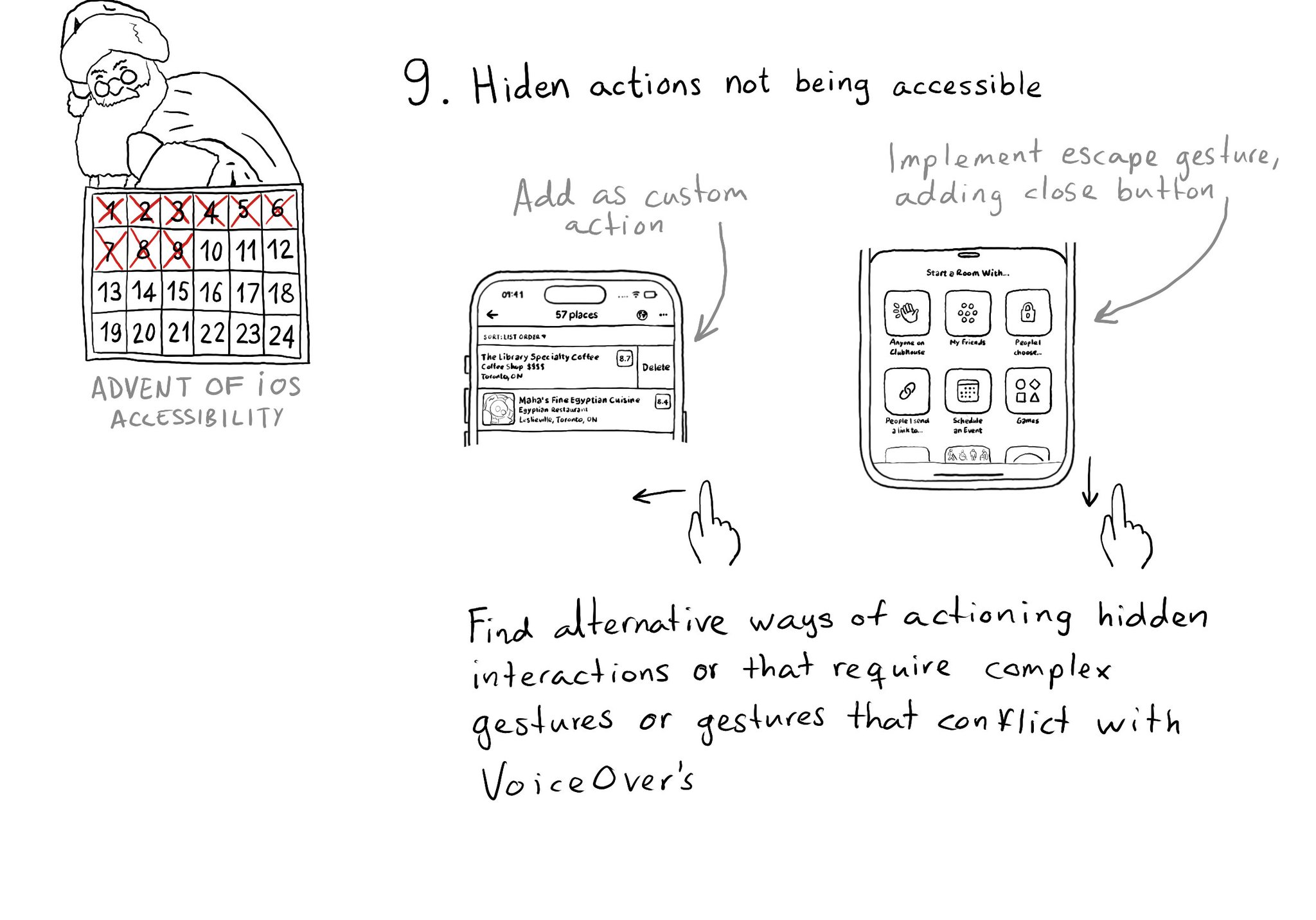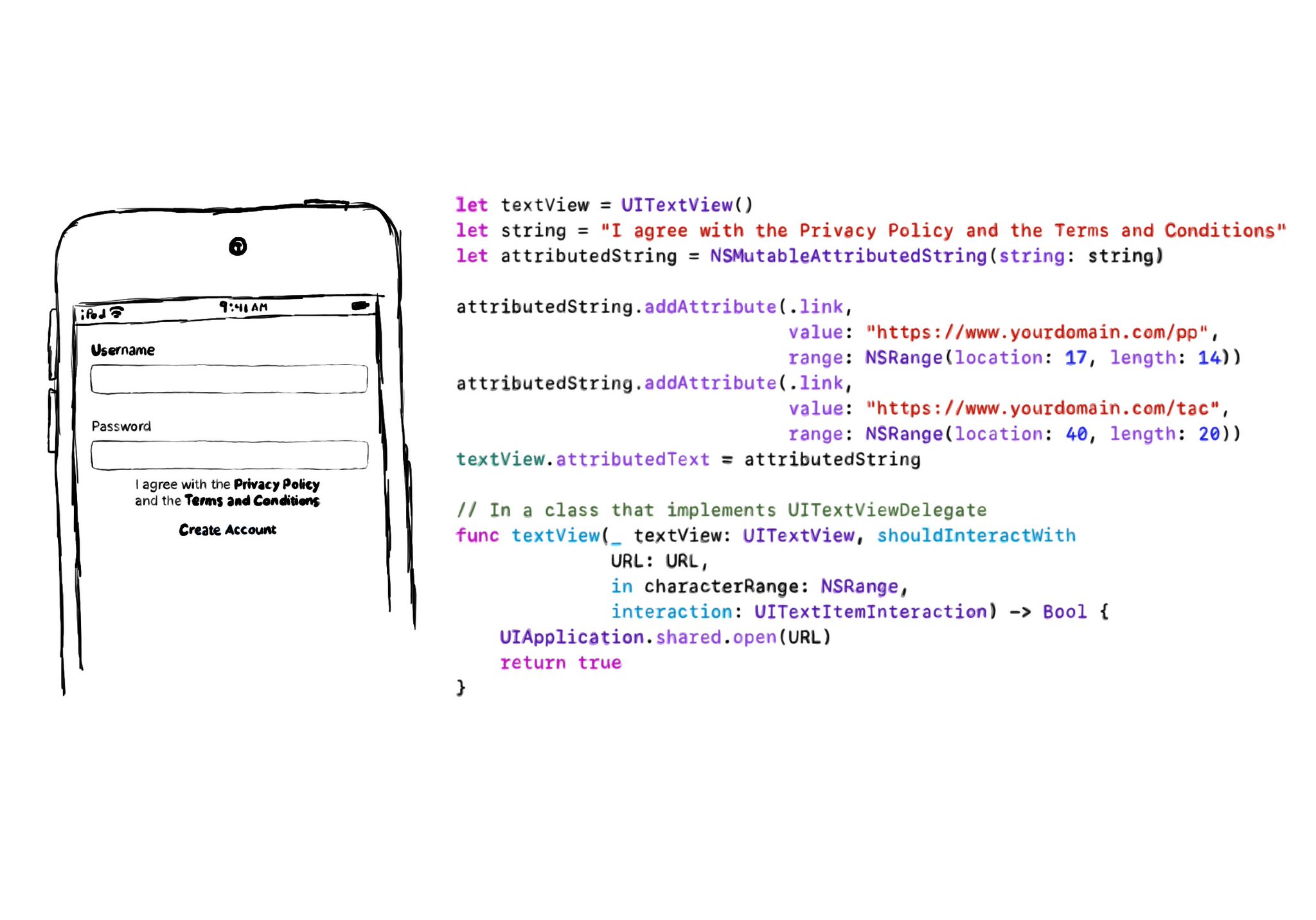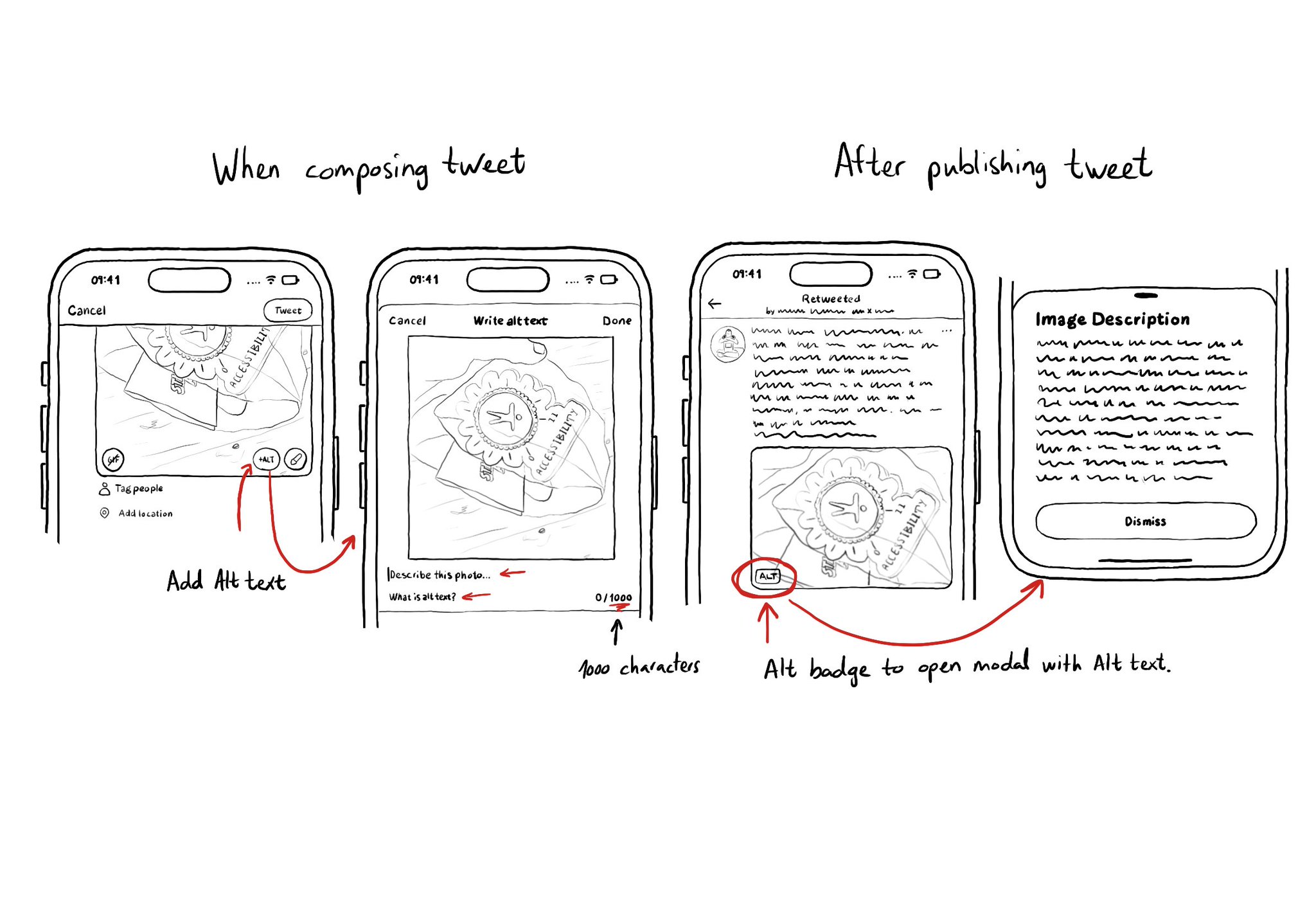If you have interactions that are hidden or require complex gestures to be performed or that may conflict with VoiceOver, you need to provide alternative ways of executing these actions. Custom actions can help a lot of times, but not always.

You may also find interesting...

If you need multiple links embedded in some text (like the classic T&Cs and Privacy policy), the easiest is to use a UITextView & Attributed Strings, and it will work beautifully with VoiceOver. You'll be even able to navigate through links. In the example, VoiceOver would say: “I agree with the Privacy Policy and the Terms and Conditions, link”. Swipe down, should announce: “Privacy Policy, link” and you can double tap to open it. Swiping down one more time announces: “Terms and Conditions, link”. Example code in the image: ```swift let textView = UITextView() let string = "I agree with the Privacy Policy and the Terms and Conditions" let attributedString = NSMutableAttributedString(string: string) attributedString.addAttribute(.link, value: "https://www.yourdomain.com/pp", range: NSRange(location: 17, length: 14)) attributedString.addAttribute(.link, value: "https://www.yourdomain.com/tac", range: NSRange(location: 40, length: 20)) textView.attributedText = attributedString extension ViewController: UITextViewDelegate { func textView(_ textView: UITextView, shouldInteractWith URL: URL, in characterRange: NSRange, interaction: UITextItemInteraction) -> Bool { UIApplication.shared.open(URL) return true } } ```

Support both orientations, if possible. I know not even iOS itself does it, but it hasn't always been like that. You'll create a more robust UI that will be easier to port to iPadOS. And especially, don't force your users to rotate their devices.

It is not just about applying accessibility APIs, but about caring, and thinking of features that can make your app more accessible and inclusive to everyone. Twitter's alt-text feature is a great example. Thanks, @TwitterA11y! You'll be missed.